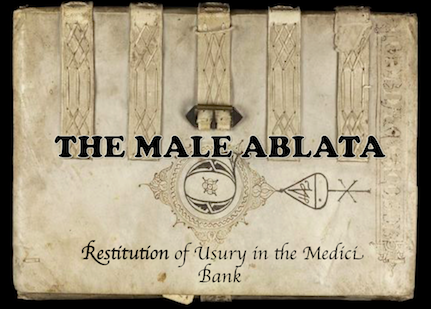The Novitiate Altarpiece - The Pala
“All those things [referring to works of art] have given me the greatest satisfaction and contentment because they are not only for the honor of God but are likewise for my own remembrance. For fifty years, I have done nothing else but earn money and spend money; and it became clear that spending money gives me greater pleasure than earning it.”
- Cosimo de’ Medici (1389 – 1464).
Uttered by Cosimo de’ Medici the Elder, these words are representative not only of his own attitude towards art, but also of the pattern of art patronage that was prevalent among wealthy bankers in Italy of 14th and 15th centuries. While Cosimo de’ Medici has commissioned a great number of religious artworks that he later donated to the Church, one of his commissions does a particularly remarkable job of illustrating the two motivations outlined above, namely desire to honor of God and commemorate himself. That work of art is the Novitiate Altarpiece, also known under a longer name, Madonna and Child Enthroned with Saints Francis, Damian, Cosmas and Anthony of Padua, which was commissioned by Cosimo de’ Medici the Elder, a prominent Florentine banker, to Filippo Lippi and Francesco Pisellino.
In the pala, or the top part of the altarpiece, Virgin Mary, her breast slightly exposed, is breastfeeding Baby Christ. From left to right, she is surrounded by St. Francis, whose presence can be explained by the fact that Santa Croce, the church to which the altarpiece was donated, was a Franciscan Church, St. Damian and St. Cosmas, who were the patron saints of the Medici Family, and St. Anthony of Padua, a Franciscan saint who was not very popular in Florence and whose connection to the patron is unclear. Saint Francis, who established the mendicant order and renounced the worldly goods in order to serve the poor, and whose followers were known for their anti-usury sermons and bank-like establishments, or the Mounts of Piety, that were created to stop the development of banks. Cosma and Damian were considered the patron saints of the Medici family because they were doctors (medics), and so were the earlier members of the Medici family who gave the clan their last name. In fact, Cosimo de’ Medici was named after St. Cosma and had a twin brother, Damiano, who died at an early age. St. Anthony of Padua, on the other hand, has no relation to the family, but was known for his zealous preaching against usury.

